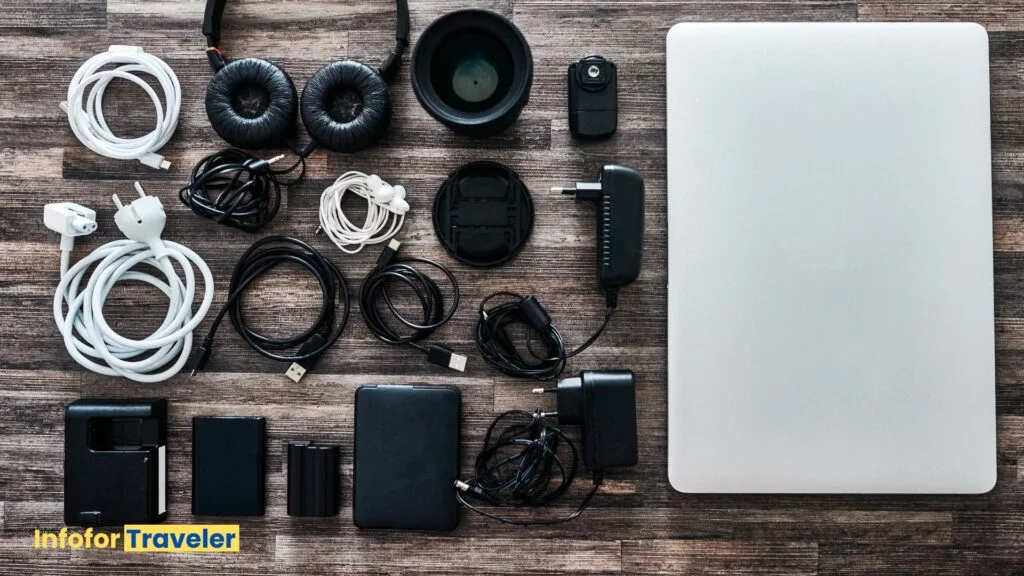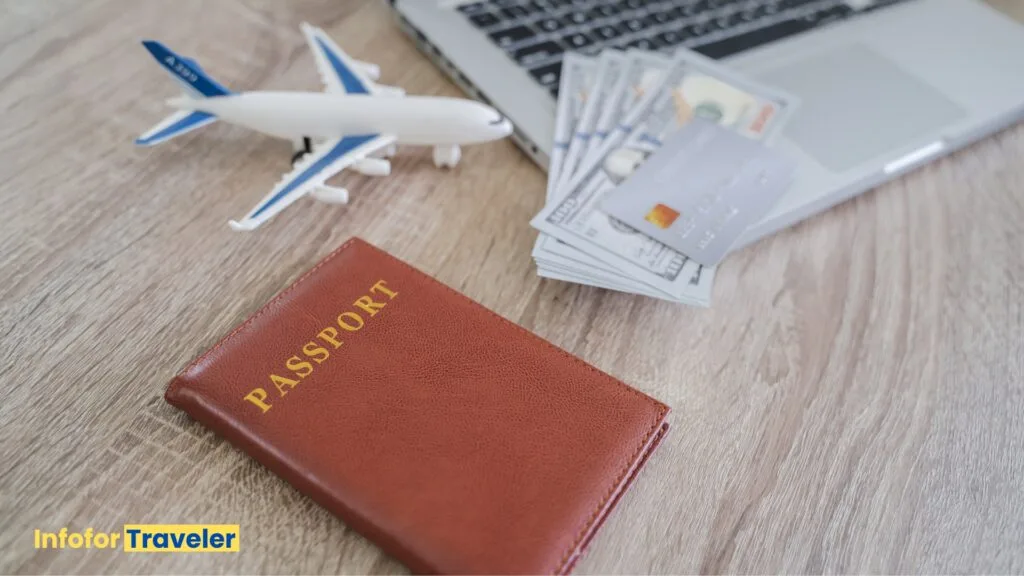Planning a 4-day trip is exciting, but figuring out what to pack for a 4-day trip can be a challenge. Pack too much, and you’ll be dragging around unnecessary weight. Pack too little, and you might end up without essential items. Striking the right balance is key to traveling efficiently while still being prepared.
This guide will help you determine exactly what to pack for a 4-day trip, covering clothing, toiletries, electronics, travel documents, and smart packing techniques. Whether you’re heading out on a business trip, a weekend getaway, or an outdoor adventure, following these guidelines will ensure a stress-free experience.
Suitable Clothing Choices for 4-Day Trips
- Mix & Match
Choose neutral colors to maximize outfit combinations. - Layer Smartly
Pack lightweight layers suitable for varying climates. - Expert Tip
Opt for wrinkle-resistant fabrics to stay polished.
Packing the right clothes for a 4-day trip is all about versatility. The goal is to bring outfits that mix and match easily, reducing the number of items you need while ensuring you’re covered for different occasions. Instead of packing a different outfit for each day, select pieces that can be worn multiple times in various combinations.

For tops, bring three to four shirts or blouses that suit the climate and your planned activities. Neutral or solid colors work best as they can be paired with different bottoms. Speaking of bottoms, two pairs of jeans, trousers, or skirts should be enough, as they can be reworn without issue. If you anticipate any formal events or outdoor adventures, adjust your choices accordingly.
Layering is essential, so bring a lightweight jacket or sweater. If traveling to a colder destination, opt for a warmer coat but wear it while traveling to save space in your luggage. For undergarments, four sets of socks and underwear are usually sufficient. If you prefer, packing a couple of extra pairs won’t take up too much space. Sleepwear should be comfortable and compact, taking up as little room as possible.
When it comes to footwear, consider your itinerary. A single pair of comfortable walking shoes will usually be enough, but if you need something more formal, include a lightweight pair of dress shoes. Keep accessories minimal, bringing only essentials like sunglasses, a hat, or a scarf.
Toiletry Must-Haves, Compliant and Compact
- Travel Sizes
Use 3.4 oz containers to meet TSA guidelines. - Solid Alternatives
Consider solid shampoo bars to save space. - Expert Tip
Place liquids in a clear quart-sized bag for easy screening.
Toiletries can take up a lot of space, so it’s best to stick to travel-sized products. A compact toiletry bag should include a toothbrush, toothpaste, deodorant, and a small bottle of conditioner and solid shampoo for travel. Some travel special shampoo and conditioner bars are great alternatives since they save space and comply with airline liquid restrictions.
Body wash or soap, a hairbrush or comb, and a basic skincare routine (moisturizer, sunscreen, and lip balm) should also be included. If you wear makeup, pack only the essentials to avoid cluttering your bag. Additionally, remember to bring any prescription medications and a small first-aid kit with band-aids, pain relievers, and any personal medical necessities.
For flights, all liquid toiletries should be in 3.4-ounce (100ml) containers and placed inside a clear, quart-sized bag to comply with TSA regulations. If you prefer, purchasing travel-sized toiletries upon arrival can help you save even more space.
Essential Tech Gear for Your Trips
- Stay Charged
Bring a portable power bank for on-the-go charging. - Universal Adapter
Essential for international destinations. - Expert Tip
Download offline maps to navigate without internet.

Electronics are crucial for staying connected and capturing memories. The most important device is your smartphone, which serves multiple purposes, from navigation and communication to entertainment and photography. To ensure you stay powered up throughout your trip, pack a charger and a portable power bank.
If you enjoy taking high-quality photos, consider bringing a separate camera, though many smartphones offer excellent photography capabilities. A pair of noise-canceling headphones or earbuds can make your journey more comfortable, especially during long flights or road trips.
For international travel, a universal adapter is essential to keep your devices charged regardless of plug type. If you’re bringing multiple gadgets, a compact power strip with USB ports can help reduce the need for multiple chargers. Before your trip, download any necessary apps, maps, or entertainment to use offline in case of limited connectivity.
Organizing Crucial Travel Documents
- Digital & Physical
Keep both digital copies and physical documents. - Secure Storage
Use a travel wallet to organize essentials. - Expert Tip
Enroll in STEP for travel alerts and safety updates.
Keeping your travel documents organized is crucial for a smooth journey. Your passport or driver’s license should always be easily accessible, preferably in a secure travel wallet. If flying, ensure you have your boarding passes, either printed or saved digitally on your phone.
It’s also a good idea to keep copies of hotel reservations, travel itineraries, and any pre-booked tickets for activities. While many of these can be stored on your phone, having a printed backup can be useful in case of technical issues.

Bring at least one credit or debit card, along with some cash in the local currency for small purchases, tips, or emergencies. Travel insurance details should also be handy, especially if you’re traveling abroad. A written list of emergency contacts, including family members, your hotel, and local emergency services, is always a good precaution.
Smart Packing Strategies for Limited Luggage
- Rolling Technique
Roll clothes to maximize space and reduce wrinkles. - Packing Cubes
Organize items and streamline unpacking. - Expert Tip
Wear your bulkiest items during transit to save space.
Efficient packing makes a big difference, allowing you to fit everything you need while keeping your luggage manageable. One of the best methods is rolling clothes instead of folding them. This not only saves space but also minimizes wrinkles.
Packing cubes are another game-changer, helping to keep your belongings organized and easy to access. You can separate clothing, toiletries, and electronics into different cubes to avoid rummaging through your bag each time you need something.
Wearing your bulkiest clothing while traveling—such as a jacket or boots—frees up space in your luggage. Shoes should be packed at the bottom of your suitcase, preferably in a separate bag to keep other items clean. Stuffing socks or small accessories inside shoes is a clever way to maximize space.
Another effective tip is to limit unnecessary items. If something is not essential or can be purchased at your destination, leave it behind. By sticking to a well-planned packing list, you can avoid overpacking and travel with ease.
Apps and Tools that help You Pack Smart
- Custom Lists
Use apps like PackPoint to create tailored lists. - Weather-Aware
Smart tools adjust suggestions based on forecasts. - Expert Tip
Sync lists to cloud so you can access them on any device.
Digital Packing Made Easy
Technology can simplify the packing process and help prevent forgotten essentials. These smart tools guide you through personalized packing lists, weather forecasts, and destination-based suggestions.
PackPoint
An intelligent packing assistant that curates a list based on your trip details, destination, duration, activities, and weather.
TripList
Ideal for organizing categories like clothing, toiletries, and gear. You can set reminders and track what’s packed.
Google Keep or Apple Notes
Simple and effective for creating custom lists, especially if you prefer flexible, manual control.
Real-Life Examples
Let’s talk about some case-studies to make better understanding for You:
Efficient Business Trip Packing
- Capsule Wardrobe
Select pieces that serve multiple purposes. - Minimal Footwear
Choose versatile shoes suitable for various occasions. - Expert Tip
Plan outfits ahead to avoid overpacking.
Jane, a marketing executive from New York who needed to pack for a 4-day conference in San Francisco. She knew she needed professional outfits for meetings and networking events, as well as casual clothes for downtime.
Instead of bringing four separate outfits, Jane packed two tailored blazers, three blouses, and two pairs of trousers that could be mixed and matched. She included one comfortable dress for evening events and wore her bulkier coat during the flight. She opted for flats instead of heels to save space and used a small packing cube for toiletries.
Smart Solo Travel Packing
- Essentials-Only Strategy
Prioritize multipurpose clothing and gear. - Streamlined Tech Kit
Bring compact gadgets to stay connected. - Expert Tip
Pack light to stay mobile and avoid delays.
Liam, an avid solo traveler from Seattle, took a 4-day cultural trip to Montreal. Knowing he’d be navigating solo through museums, cafes, and walking tours, he focused on packing smart and light.
He chose two pairs of neutral pants, four lightweight shirts, and a weather-appropriate jacket that doubled as an outer layer and a pillow during his flight. A compact daypack held essentials for daily outings, while a power bank and universal adapter kept his devices charged throughout the day. With minimal items and zero checked baggage, Liam enjoyed flexibility and peace of mind every step of the way.
Practical Family Trip Packing
- Pre-Planned Outfits
Use outfit bundles for each family member. - Shared Essentials
Pack multi-use toiletries and compact gear. - Expert Tip
Label and separate clothes by person to stay organized.
The Johnson family planned a 4-day road trip to the Smoky Mountains with their two children. To avoid chaos, they pre-packed full outfits in labeled bags for each day and each child.
They shared toiletries in one bag to save space and kept snacks, wet wipes, and entertainment tools (like tablets and coloring books) handy in a travel tote. A compact medical kit ensured they were prepared for minor issues. This organization helped reduce stress and made rest stops, hotel stays, and transitions smoother and faster.
Adventure-Ready Packing Plan
- Functional Layers
Opt for moisture-wicking, quick-dry clothes. - Compact Gear Only
Carry essentials like headlamps and water filters. - Expert Tip
Test gear before the trip to avoid surprises.
Ben, an outdoor enthusiast, set out on a 4-day hiking trip through the Appalachian trails. Space was at a premium, so he focused on functionality over quantity.
He packed two moisture-wicking base layers, a fleece jacket, one rain shell, and lightweight hiking pants. His gear included a foldable stove, headlamp, collapsible water bottle, and a small dry bag for electronics. With strategic layering and compact tools, Ben stayed agile without sacrificing comfort or preparedness during unpredictable terrain and weather.
Festival-Ready Packing Strategy
- Weather-Smart Outfits
Pack for both sun and rain conditions. - Group-Friendly Gear
Include shared essentials like sunscreen and chargers. - Expert Tip
Use a fanny pack or belt bag to keep valuables secure.
Jess and her friends attended a 4-day music festival in Austin. Knowing the weather could change and that comfort was crucial, she packed breathable clothes for daytime and one warm jacket for cooler evenings.
They shared larger items like a portable speaker, sunscreen, and dry shampoo, reducing overlap. Jess used a belt bag to keep cash, ID, and her phone close while dancing and moving through crowds. By coordinating with her group and packing purposefully, she stayed carefree and well-prepared the entire trip.
Benefits and Drawbacks of Light Packing
- Pros
Easier mobility and quicker airport navigation. - Cons
Limited outfit choices and potential laundry needs. - Expert Tip
Research destination amenities to pack accordingly.
Packing light has several advantages, the most obvious being increased mobility. Carrying a smaller bag makes it easier to move around, whether you’re navigating airports, public transport, or city streets. It also helps you avoid checked baggage fees and the risk of lost luggage.
However, the downside of packing light is that you have fewer outfit choices and may need to do laundry if you run out of clean clothes. You also need to be mindful of unexpected weather changes, as carrying extra layers or backup clothing might not be an option.
Despite these drawbacks, strategic packing ensures you bring exactly what you need without feeling weighed down by excess items. By choosing versatile clothing, limiting unnecessary items, and using space-saving techniques, you can enjoy a hassle-free trip.
Creating a Versatile 4-day trip Packing Checklist
✅ Do
- ✅ Pack 3–4 mix-and-match outfits
- ✅ Bring essential toiletries in travel sizes
- ✅ Carry phone, charger, and power bank
- ✅ Keep passport/ID and travel documents handy
- ✅ Include any prescription medication
- ✅ Use packing cubes or organizers
❌ Don’t
- ❌ Overpack shoes or bulky items
- ❌ Bring full-size liquids
- ❌ Forget travel adapters (for international trips)
- ❌ Pack valuables in checked luggage
- ❌ Leave without checking weather
🕐 Reminder
- ✅ Download offline maps, tickets, and guides
- ✅ Carry some local currency
- ✅ Leave space in your bag for return items
- ✅ Re-check your day-to-day itinerary
- ✅ Lock and tag your luggage
Conclusion
What to pack for a 4-day trip, sometimes it feels stressful. By focusing on essential clothing, travel-sized toiletries, necessary electronics, and proper document organization, you can ensure a smooth and enjoyable experience.
Whether you’re traveling for work, leisure, or adventure, the key is to pack smartly, bringing what you need without overloading your luggage. Implementing efficient packing techniques, such as rolling clothes and using packing cubes, will help you make the most of your available space.










